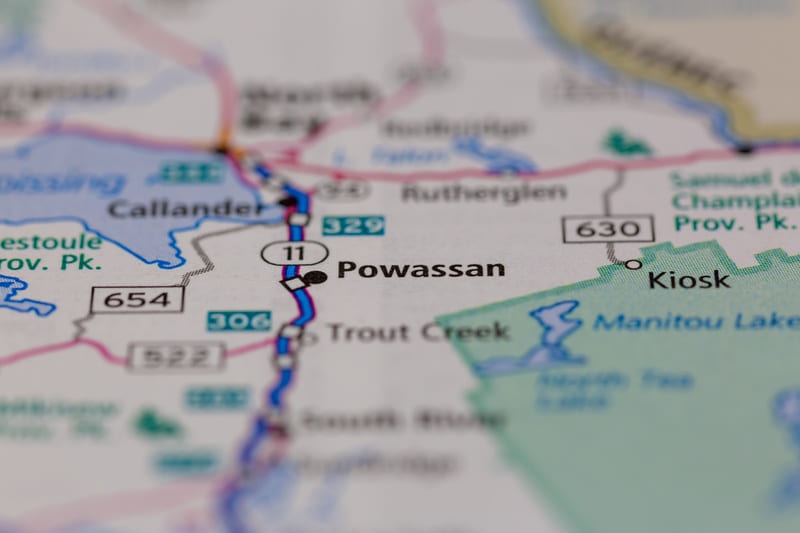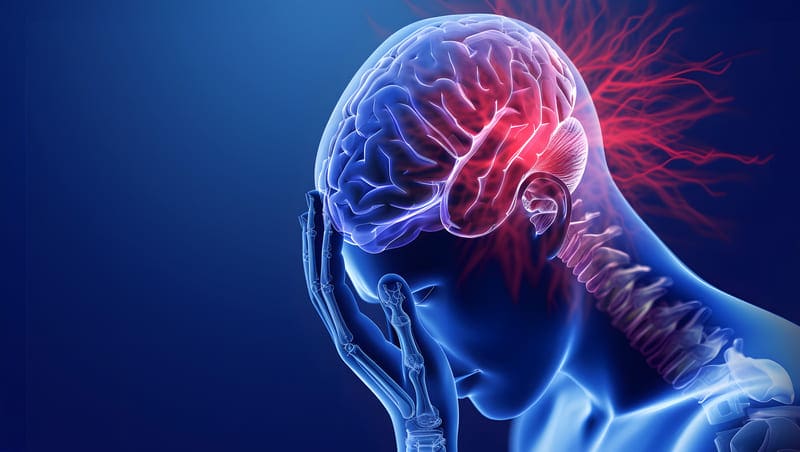Although the Powassan Virus is a rare tick-borne pathogen, its fatality rate is high. In the US, the number of cases affected by the Powassan virus is gradually increasing. Here we will discuss symptoms, diagnosis, prognosis, and treatment of diseases caused by the Powassan Virus.

What is Powassan tick-borne flavivirus?
In 1958, an autopsy of the brain tissue of a child who had died from encephalitis was conducted in Powassan, Ontario. Scientists found a tick-borne virus present in the brain tissue which is now known as the Powassan virus.
This virus is found in the northeastern states of the US (Minnesota, Wisconsin, Indiana, Ohio, New York, Maine), Canada, and Russia. Usually, the cases of Powassan virus disease increase from April to November when tick-bites increase. However, doctors have seen cases all year round.
Powassan virus belongs to the flavivirus family. Flaviviruses are transmitted to humans by ticks and mosquitoes. These viruses cause diseases such as dengue, zika, and Japanese encephalitis. Powassan virus primarily infects rodents and small mammals such as squirrels, foxes, and deer. It is usually transmitted via deer tick (Ixodes scapularis) to humans. Human-to-human transmission (i.e. spread through sneezing, coughing, etc.) of the Powassan virus has not been reported.
Based on their genetic makeup, there are two types of Powassan viruses – lineage 1 and lineage 2. In humans, infection via lineage 2 is more common as these viruses get transmitted via deer ticks. Lineage 1 Powassan virus is more common in squirrels and rarely found in humans. While these two lineages are different in their genomic sequence, their clinical symptoms and treatment do not differ.
Symptoms
Powassan virus disease infection starts within three hours after the tick bite. This is in stark contrast with most other tick-borne diseases where infection begins after a couple of days. The initial symptoms resemble the flu:
- Fever
- Sore throat
- Headache
- Body ache
- Weakness
- Nausea
- Vomiting
- Rash

After these initial symptoms, in some cases the disease may aggravate, and neurological symptoms may appear.
- Prolonged fever
- Confusion
- Seizures
- Paralysis
- Paralysis of eye muscles
These symptoms are also found in other tick-borne diseases, which makes diagnosis of Powassan virus disease harder. Furthermore, patients with tick-borne diseases such as Lyme disease, can be co-infected with the Powassan virus at the same time (comorbidity).
Diagnosing Powassan virus disease
To diagnose the Powassan virus disease, doctors examine a history of exposure to ticks, physical exam, and lab work. The diagnosis of Powassan virus disease poses some challenges. Often people are unable to give a history of a tick-bite as ticks are quite small and a tick-bite usually does not hurt at all. Additionally, the symptoms in the initial stage are similar to those of flu or infection with other pathogens.
When a patient presents with neurological symptoms, clinicians advise brain imaging, blood work, and Cerebrospinal fluid analysis (lumbar puncture). CSF analysis may not detect any changes in some cases but often it shows increased white blood cells, increased levels of proteins, and normal levels of glucose.
Blood work shows thrombocytopenia (decrease in thrombocytes), lymphopenia (decrease in white blood cells), and increased levels of inflammatory markers. Also, IgM antibodies may be detected in the serum or CSF analysis.
Prognosis and risk
When patients have only initial flu-like symptoms, they recover completely. However, in some cases, neurological symptoms appear. When neurological symptoms appear, the prognosis of the disease is variable.
After neurological symptoms, half of the patients may develop long-lasting symptoms or disabilities. For instance, patients may develop:
- headaches
- memory impairment
- incoordination in movements
- tremor
- weakness
- hemiplegia
- paralysis of eye muscles
In 10-15% of cases with neurological symptoms, the disease proves to be fatal.

Tips to prevent tick-borne infections
Given the difficulties in the diagnosis and treatment of the disease, it is prudent to focus on the prevention of tick-bites. Here are some tips to prevent tick bites:
- Be familiar with tick habitats and if possible, avoid these areas
- To make your yard a tick free zone, remove leaf litter and mow the lawn. Use pesticides if necessary.
- Be familiar with the tick activity season
- Use tick repellents to reduce contact with ticks
- Apply tick repellents on your outdoor clothing and gear
- Cover your arms and legs to minimize tick-bites
- Use light-colored clothing to spot and remove ticks easily
- Consult a veterinarian to protect your pets from ticks
- Use tweezers to remove ticks easily if you spot them on your body
- Consult your doctor to learn more about how to prevent tick bites
Treatment
Although there is no disease-specific treatment for Powassan virus disease, patients need to consult their doctor soon to prevent disability or death. In the initial stage of the disease, medications to treat fever, and body ache are prescribed. Additionally, intravenous fluids may become necessary if the patient has persistent vomiting.
For neurological complications, infectious disease specialists and neurologists may together develop a treatment plan. Treatment to reduce swelling of the brain becomes necessary. High doses of corticosteroids or intravenous immunoglobins are usually prescribed to manage neurological symptoms. In some patients, patients may need support for breathing. Anti-viral drugs are not known to be effective against the Powassan virus.
In conclusion, Powassan virus disease is caused by the transmission of deer ticks. The initial stage is characterized by flu-like sickness, but later neurological complications develop. These neurological complications may become fatal and hence prompt treatment becomes essential.
At IGeneX, we are committed to helping you fight tick-borne diseases. Your first step towards treatment is to get tested and iGeneX makes testing easier for you.
Reference
https://igenex.com/tick-talk/five-emerging-tick-borne-diseases/
https://www.ncbi.nlm.nih.gov/books/NBK570599/
https://www.cdc.gov/powassan/faqs.html
https://www.health.state.mn.us/diseases/powassan/powassan.pdf








